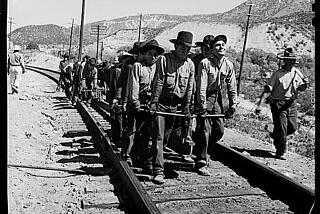‘Savage’ Satire Blurs Lines of Popular Culture
For much of the ‘90s, writer Alex Shakar was a cloistered doctoral candidate in creative writing, looking down on the real world from his proverbial ivory tower. He regarded himself as an enlightened intellect above the consumer fray, well positioned to write a novel satirizing popular culture and consumer marketing, particularly the young trend spotters hired to find the Next Big Thing. That was until he became trend-spotter quarry himself.
Shakar was unmasked when a team of them happened to visit the coffee shop in his Chicago neighborhood where he was working on his book. “I thought, I’m not going to give them anything useful because I’m the least trendy person in the world, but I’ll be able to milk them for information.”
The researchers started out by asking predictable questions such as what stores did he shop in and what was his fanciest piece of clothing. Then they moved on to questions he wasn’t expecting, such as what was his philosophy of life and what were his spiritual ideals.
“I was fascinated that they were asking me those questions, so I started getting carried away with myself talking with them about it. And then one of the women looks down and says, ‘Those are nice shoes you’ve got on. What kind are those?’ I said, ‘Oh, they’re Australian sheepherders’ boots.’
“And they just stopped and looked at each other like, ‘We got it.’ And I felt so humiliated in that moment because I realized that they had located this product that I romanticized and that I made a part of my identity. I realized it had this image for me of being rustic and rural and rugged. So it helped me realize just how things were working on me on all kinds of unconscious levels as they work on us all.”
Shakar plunged ahead with his first novel, a piercing examination of consumer culture. After 51/2 years of writing, his stiletto insights became “The Savage Girl,” which was snapped up by HarperCollins. The book clearly stood out, says HarperCollins publisher Cathy Hemmings. “This whole notion of marketing and popular culture and what we’re facing as we enter this new century, he nailed it.” Several major critics agreed. The Washington Post compared him to Thomas Pynchon, and the New York Times’ Janet Maslin concluded that Shakar writes with “a scathing intelligence that transcends the trendiness of any particular moment.” The Los Angeles Times noted his “frighteningly smart take on an advertising-drenched society.”
The book opens with Ursula Van Urden’s arrival in Middle City, which is built into the side of a volcano. Ursula has come to take care of her schizophrenic sister, Ivy, a gaunt fashion model who has been hospitalized after a suicide attempt. Ursula seeks out Ivy’s estranged boyfriend, the cynical Chas Lacouture with the “subzero smile,” and finds herself lying her way into a job at his trend-spotting firm, Tomorrow Ltd. She falls for another trend spotter who believes products reflect the best in us, declaring beauty “the PR campaign of the human soul.”
Ursula seizes on a homeless woman as the inspiration for a new marketing campaign she calls “the savage girl” look. Her plan backfires when Ivy is named the poster girl for savageness and stars on a 24-hour Web-cam site where she spends hours lighting cigarettes with the $20 bills viewers send her. Then things begin to spiral out of control.
Shakar looks more like a graduate student than a media darling who has earned six figures for his first novel. He has very pale skin and very dark hair, and he’s dressed in dark, nondescript student wear, a plain wool coat thrown over a sweater and pants. He’s sipping coffee in a park in Cobble Hill, Brooklyn, near his childhood home, where he experienced his first strange brushes with popular culture.
Strange, because Shakar was in the unusual position of having an actor for a father--Martin Shakar, who is probably best known for playing John Travolta’s brother the priest in the movie “Saturday Night Fever.”
“I think I had a different view of pop culture and maybe the artificiality of it,” he says, choosing his words carefully. “I also had a kind of love-hate relationship with it. When that movie came out in the ‘70s, I was in elementary school, and my dad was the local hero.
“But I also got to see how he had to struggle. Every so often I’d turn on the TV and see my dad getting strangled and being some insane killer. It’s been very hard for him to be a serious artist and to be in this world of pop culture, where you’re having to do these really cheesy or sometimes insulting roles.”
Shakar set his sights on consumer culture after he happened across a book called “The Strategy of Desire” (Doubleday, 1960) by Ernest Dichter, who is known as the father of consumer motivation research. Dichter compared Soviet propaganda with American marketing, saying they appeared similar but were actually opposites.
“Soviet propaganda existed to create contentment, to make people feel like they’re part of a great nation, whereas American marketing exists to create discontent in its consumers, to make American consumers always feel like wanting newer cars, bigger houses and younger spouses,” Shakar says, laughing. “He actually said that. He was right, but it was really kind of creepy to think that the cornerstone of our culture is, in a way, discontent.”
He began looking at the commercial world in a new way. He would watch and read ads and scour supermarkets, noting what was affecting him and why. He came up with a principle he calls “paradessence.”
“In the novel, the trend spotters take the protagonist, Ursula, through a supermarket, and Chas tells her that every product has a paradessence, or paradoxical essence--two desires that it can promise to satisfy simultaneously. So, for example, the paradessence of coffee is stimulation and relaxation, and every commercial or ad will promise you both of these things at the same time. When I came up with that idea, I was seeing it everywhere.” Shakar writes about the paradessence of air travel: “sanitized adventure, exoticism and familiarity.”
The book’s setting of Middle City is also steeped in what Shakar calls “post-irony,” which he says is different from the end of irony declared after Sept. 11. “The trend spotters in the book are saying the culture is supersaturated with irony, and something’s got to change, and they’re predicting this new state of mind that they call post-irony. Post-irony is not knowing whether anyone’s being ironic or earnest at any given moment, and moreover, the distinction ceases to matter. I don’t think a culture as ironic as our own can go back to earnestness, and I don’t think we should.
“Irony is a useful thing. It allows us not to have fanatical suicide bombers everywhere. And it allows us all to live together in sort of discord but still relative harmony. On the other hand, it prevents us from feeling deep passions or convictions, be they political or emotional or spiritual. And that was what I was trying to get at in the book.”
Some critics called his examination of a post-ironic world prophetic. And to Shakar’s surprise, some of his inventions have cropped up in the real world. In writing about trends, he decided to make up his own, so that his book wouldn’t become instantly outdated. One product in the book is diet water. Ridiculous, right?
“When I came up with the idea of diet water, I thought no one’s going to believe that. But in the course of writing the book, we got not only caffeine water, but now we’ve got smart water, vitamin water, fruit water. We have something called oxygen water, which gives you more oxygen in case you aren’t getting enough from the air.”
Not all Shakar’s creations are totally imagined. The savage girl was inspired by a disheveled young woman he spotted in a park. “She was sitting on the cobblestones and fashioning chain mail out of some materials it looked like she got out of the garbage. And she was so completely in her own world. I started wondering how these fashions could mean so much to her and what kind of statement she was trying to make with them. I started thinking that since she was making her own clothing, she was trying to escape from the consumer culture around her. So that became a big part of the book as I was writing it.”
It’s one thing to satirize consumer culture from the distant aerie of academia; it’s quite another thing to watch your critique of marketing morph into a product itself--a book--and make its way through the marketing process. The irony isn’t lost on Shakar.
“The parallel with Ursula in the novel for me is an amusing one and hopefully an instructive one. Ursula invents ‘the savage girl’ as a kind of revolt or critique, as this kind of guerrilla campaign against the things in society she doesn’t like. But her plan, of course, goes horribly awry. Since my product is a work of art instead of a marketing campaign, I would only hope that I fare a little better in that regard.”
More to Read
Sign up for our Book Club newsletter
Get the latest news, events and more from the Los Angeles Times Book Club, and help us get L.A. reading and talking.
You may occasionally receive promotional content from the Los Angeles Times.






